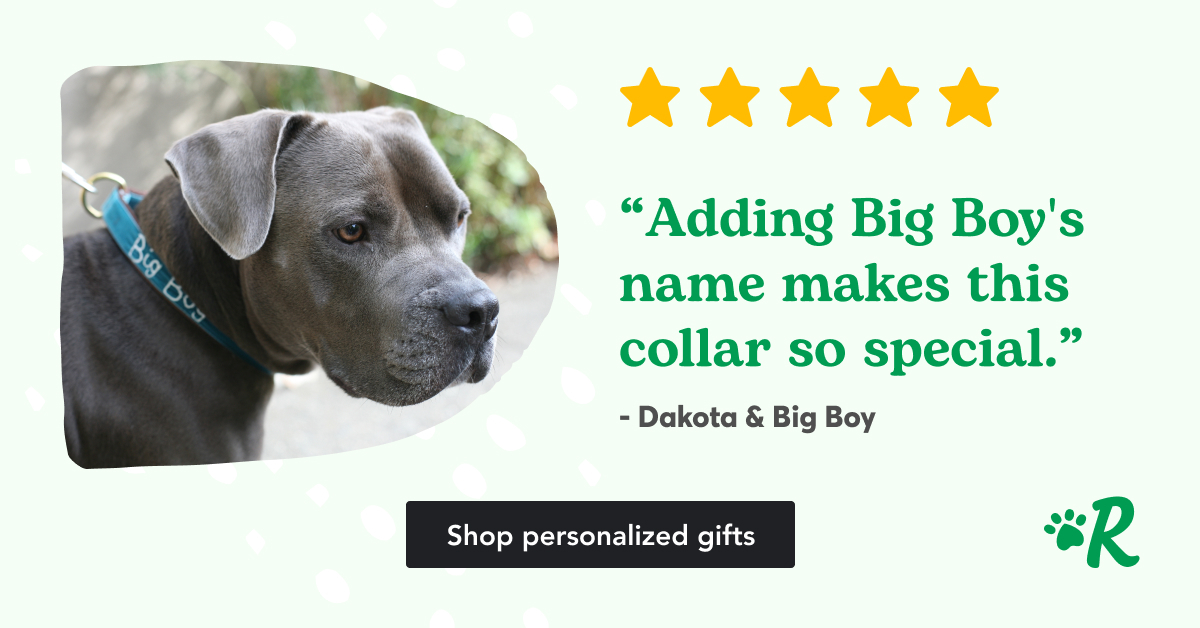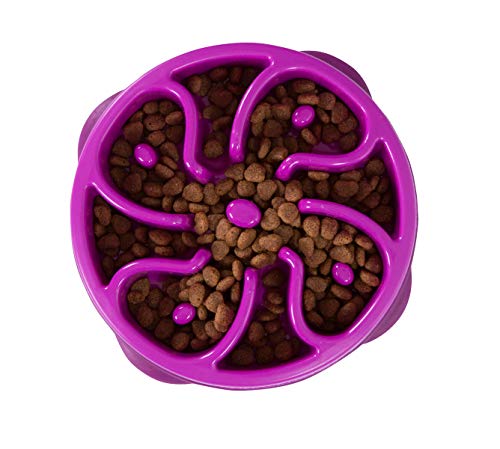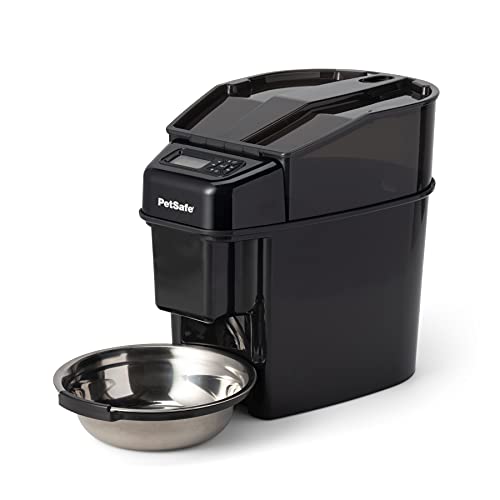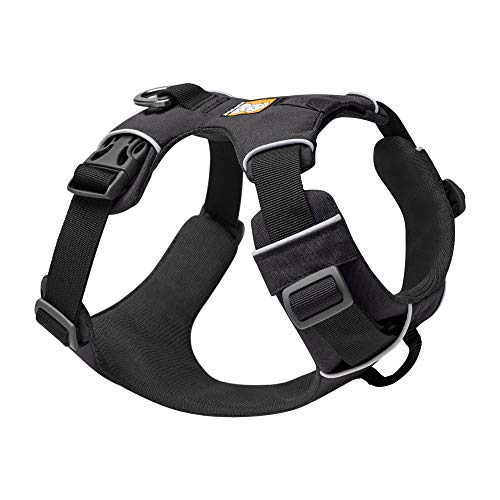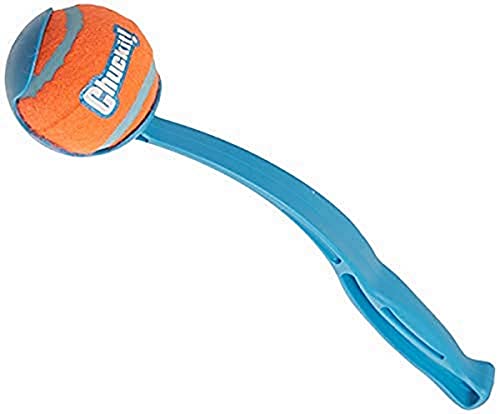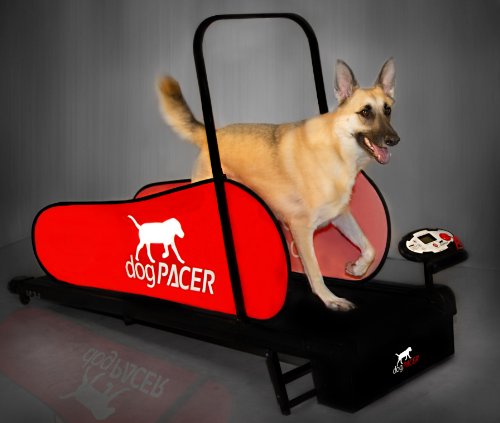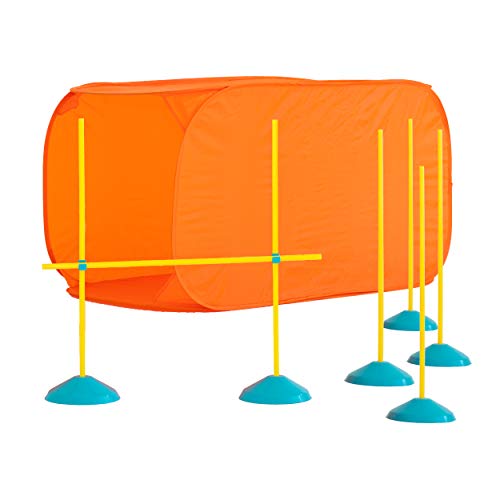- This post contains affiliate links. Read more here.
- Not a substitute for professional veterinary help.
Obesity in dogs is a major problem in the United States. The Association for Pet Obesity Prevention (APOP) reports that over half of U.S. dogs are overweight, with approximately 25% of them considered obese.
A big part of the problem? Many dog owners don’t even realize their dog is overweight. To our adoring eyes, our pets are beautiful at any weight—and we have to admit, a little padding can sometimes raise their cuddle-appeal.
Unfortunately, all it takes is a few extra pounds to cause damage, so keeping Fido at their ideal weight is one of the best things you can do for their health. If you’re concerned about your pet’s weight, talk to your vet. They can assess your dog and help you develop a safe diet and exercise plan. They can also rule out underlying medical disorders as the cause behind your dog’s weight gain.
What are the health risks associated with obesity in dogs?
According to VCA Hospitals, dogs are considered overweight when they’re 10–20% over their ideal body weight. At 20% and up, they’re considered obese.
Obesity in dogs isn’t just about looks—even an additional five pounds can contribute to serious health complications in our furry pals. Overweight dogs face a higher risk of developing the following health problems:
- Cancer
- Diabetes
- Heart disease
- Hypertension
- Arthritis
- Urinary bladder stones and urinary tract disease
- Chronic kidney disease
- Liver disease
- Heat intolerance
- Complications with anesthetic
- Skin issues
Left unchecked, obesity can trigger diseases like hip dysplasia, intervertebral disc disease (IVDD), and tracheal collapse. It’s also a quality of life issue: Heavy dogs have less energy, more aches and pains, and respiratory complications. That gives us all the more reason to take weight loss seriously.
Which dogs are prone to obesity?
The propensity to pack on pounds can strike at any age, but obesity tends to affect middle-aged dogs between 5–10 years old. Brachycephalic, or flat-faced breeds like Pugs and Bulldogs often struggle with weight, as do less active breeds like Basset Hounds and Dachshunds.
Genetics also come into play here, with some breeds more known for tipping the scales than others. Obesity is often seen in:
- Pugs
- Basset Hounds
- Dachshunds
- Beagles
- Golden Retrievers
- Labrador Retrievers
- Bulldogs
- Boxers
- German Shepherds
- Cocker Spaniels
- Rottweilers
- Newfoundlands
- Chihuahuas
- Cavalier King Charles Spaniels
- Scottish Terriers
- Dalmatians
How to help your overweight dog lose weight
We’re happy to report there’s no shortage of ways to help your dog slim down. Before jumping on any new weight loss program, however, it’s smart to first clear things with your vet. They can help you pinpoint your dog’s ideal weight and come up with a safe strategy to help them shed the pounds—and keep them off!
1. Assess and adjust your dog’s diet
To keep your dog’s nutritional needs balanced, ask your vet for healthy dog food recommendations and guidance on portions. The key here is consistency: no extra kibble, and avoid excessive treat-giving (we know it’s hard!) As long as your vet gives the go-ahead, you can reward your dog with healthy bites of fresh or frozen broccoli, cauliflower, green beans, carrots, apples, or plain canned pumpkin.
2. Step up your dog’s exercise routine
You don’t need to be a workout maniac to reap the benefits of exercise: an extra walk around the block or a few extra minutes of fetch will do. Make sure your dog’s routine reflects their age and ability. Senior dogs won’t have the stamina of their younger counterparts, and all dogs can benefit from gradually building endurance.
3. Be patient and stay consistent
Remember: it’s all about baby steps. Even small amounts of weight loss can make a difference, as demonstrated in a 2010 clinical trial that showed a correlation between minimal weight loss and symptom relief in arthritic dogs. In other words: keep at it, and your dog’s health will thank you.
Obesity in dogs is a slow and subtle threat. Many dog owners consider their pooch’s extra pudge completely normal, failing to recognize the serious health risks it poses. The good news is that once you identify obesity as a problem, you can start to work towards a solution.
These eight tools will simplify your dog’s weight loss journey, helping them to achieve their weight loss goals—while staying comfortable along the way.
8 Useful Items to Manage and Treat Obesity in Dogs
Does your voracious pal snarf down food in a flash? Help your hungry pooch to be more mindful at meal time with a slow feeder. The maze-like ridges of this model make your dog work a little for their kibble, extending meals up to 10 times longer. This feeder is BPA-free, features a non-slip base, and can go in the dishwasher.
Just as important as losing the weight is keeping it off—the last thing you want is a relapse. Treating obesity and managing weight in dogs relies on consistent portion control, and an automatic food dispenser can help.
Simplify your life with precisely portioned meals, delivered on schedule. The PetSafe Simply Feed also offers a slow-feed option that keeps your dog from gulping down that dinner in a frenzy.
Once your dog’s diet is squared away, you can look for ways to squeeze more physical activity into your routine. Walking is a low-impact way to get manage your dog’s obesity while also providing mental stimulation via sniffs and sights. Regular collars can put too much pressure on your dog’s trachea; so a good harness is essential.
This all-purpose Ruffwear number is a solid option for daily use (for more, check out our lineup of the best dog harnesses). It features foam-padded strips for comfort and two leash attachment points (chest and back). Reinforced webbing holds up to strong pulling, and reflective trim keeps your dog visible at night.
Verified Review: “I loved how durable the harness looked and felt. The padding on the chest plate felt comfortable to the touch, and I think this harness will be gentle on my dog’s skin. I also loved that this harness offers both front and back clips. My dog is not a big puller when she walks, so I’ve never felt the need to look for a front-clip harness—but now that the Ruffwear offers both options, I’ll definitely be trying out both leash positions.”
Ball tossing is a good low-impact exercise for most dogs. With a ChuckIt! Sport Launcher your dog can burn some calories while you give your arm a break. Bonus: hands-free pickup means no more dealing with drool-covered balls!
The weather outside may be frightful, but your dog can still get that necessary exercise in. With a doggy treadmill (that’s right!) your pet can get in those steps, no matter what.
This treadmill may be a good investment to manage obesity in your dog if you live in a snowy climate that makes outdoor walks a challenge for large stretches of the year. That is, if your dog takes to it—not all do! The DogPacer features pre-programmed workouts and folds up for easy storage. It accommodates dogs up to 180 pounds.
Extra weight puts added pressure on a dog’s joints, contributing to aches and pains. A quality dog bed gives your dog a comfy place to rest weary joints.
With a memory foam base and supportive bolsters, the PetFusion Ultimate Lounge supports your dog’s hips and joints while promoting mobility. This bed comes with a water- and tear-resistant cover that’s removable for easy washing.
Verified review: Tried and tested by Rover office dogs, “We were impressed with the quality of the PetFusion bed, which lives up to the ‘ultimate’ in its name. If your dog likes to burrow, like mine, I throw a fuzzy blanket or two on top, and he’s happy as can be. The bed was a 10/10 with our dogs.”
Stay informed and track your pet’s progress with a FitBark smart collar device. The FitBark tracker lets you monitor your dog’s activity, calories burned, distance traveled, and overall health. This device also provides peace of mind with GPS location tracking and escape alerts. For extra motivation, link your own FitBit or Apple device so you can develop healthy habits together with your pooch.
Looking for a new hobby to change up your dog’s dull routine? If you’re up for some training, canine agility is a fun way to exercise, bond, and learn something new. This affordable indoor agility equipment makes practice possible even on the coldest days. It’s a good starter kit for folks looking to dip their toes into the world of agility and includes a jump, a tunnel, and weave poles.
We know you want the best care for your furry friend. We also know that vet bills for overweight dogs can be expensive—which means it might be a good time to think about pet insurance. If you’re curious about whether pet insurance is right for you, we’ve weighed the pros and cons in this article to make the decision easier.
